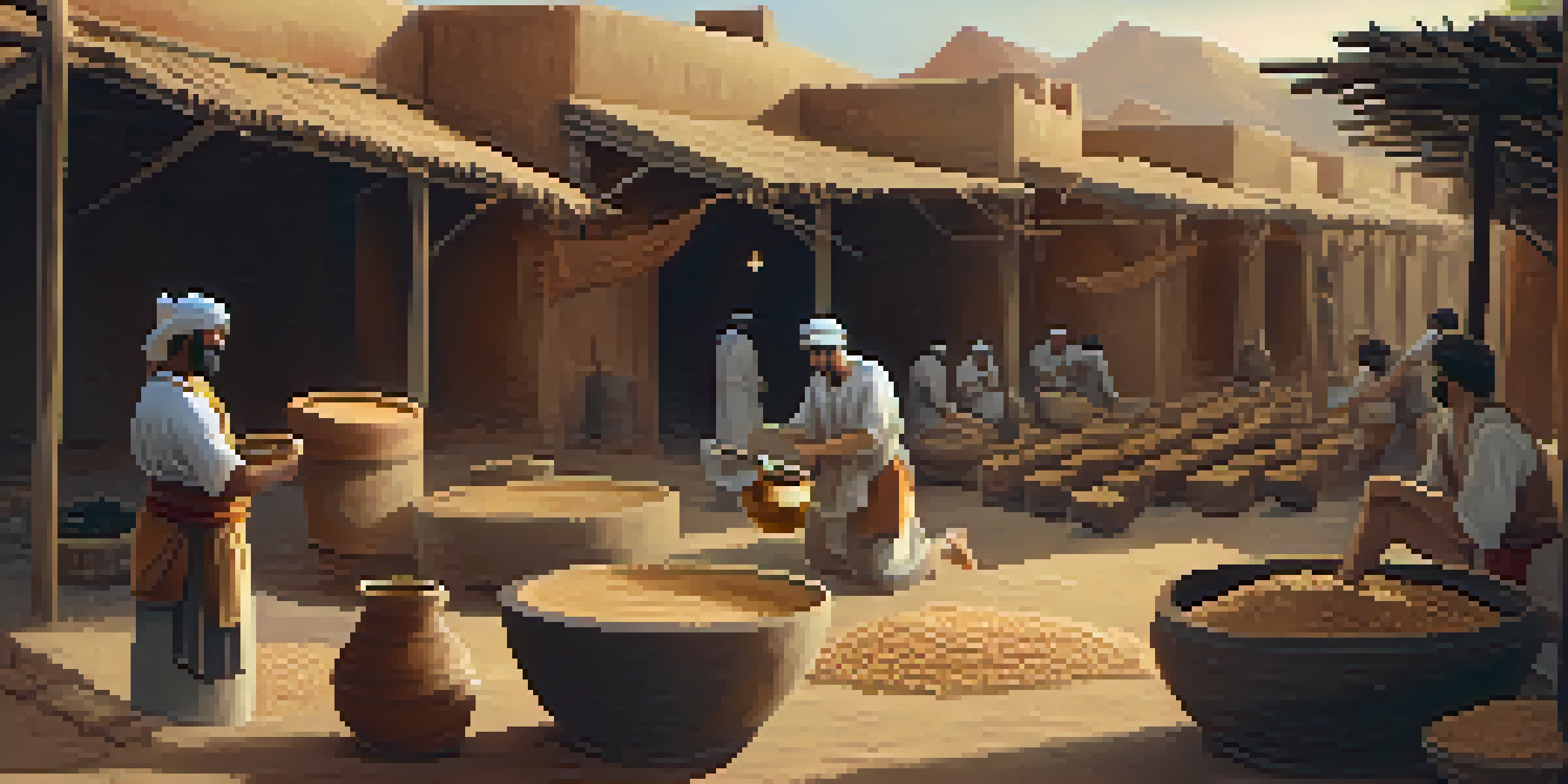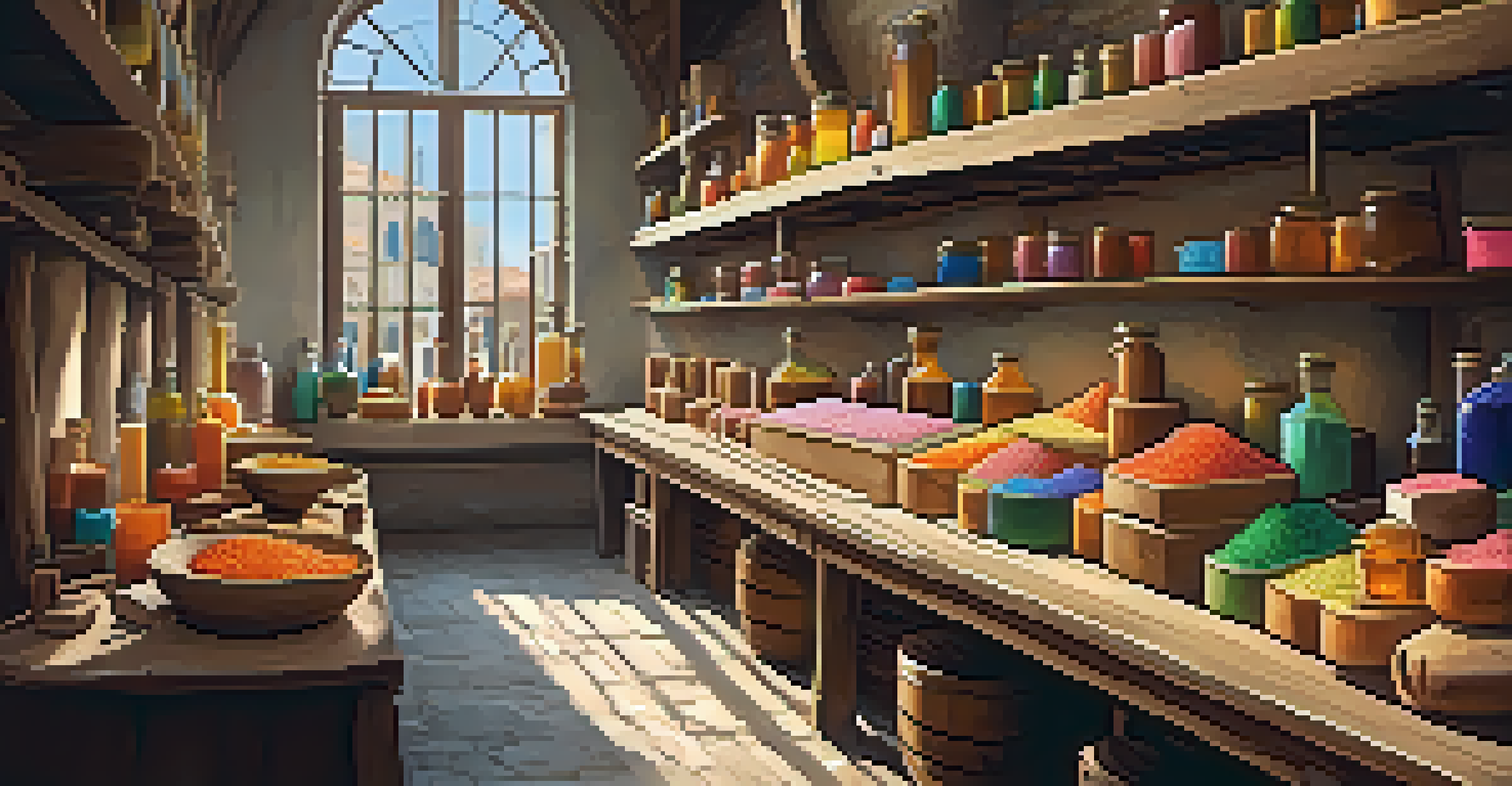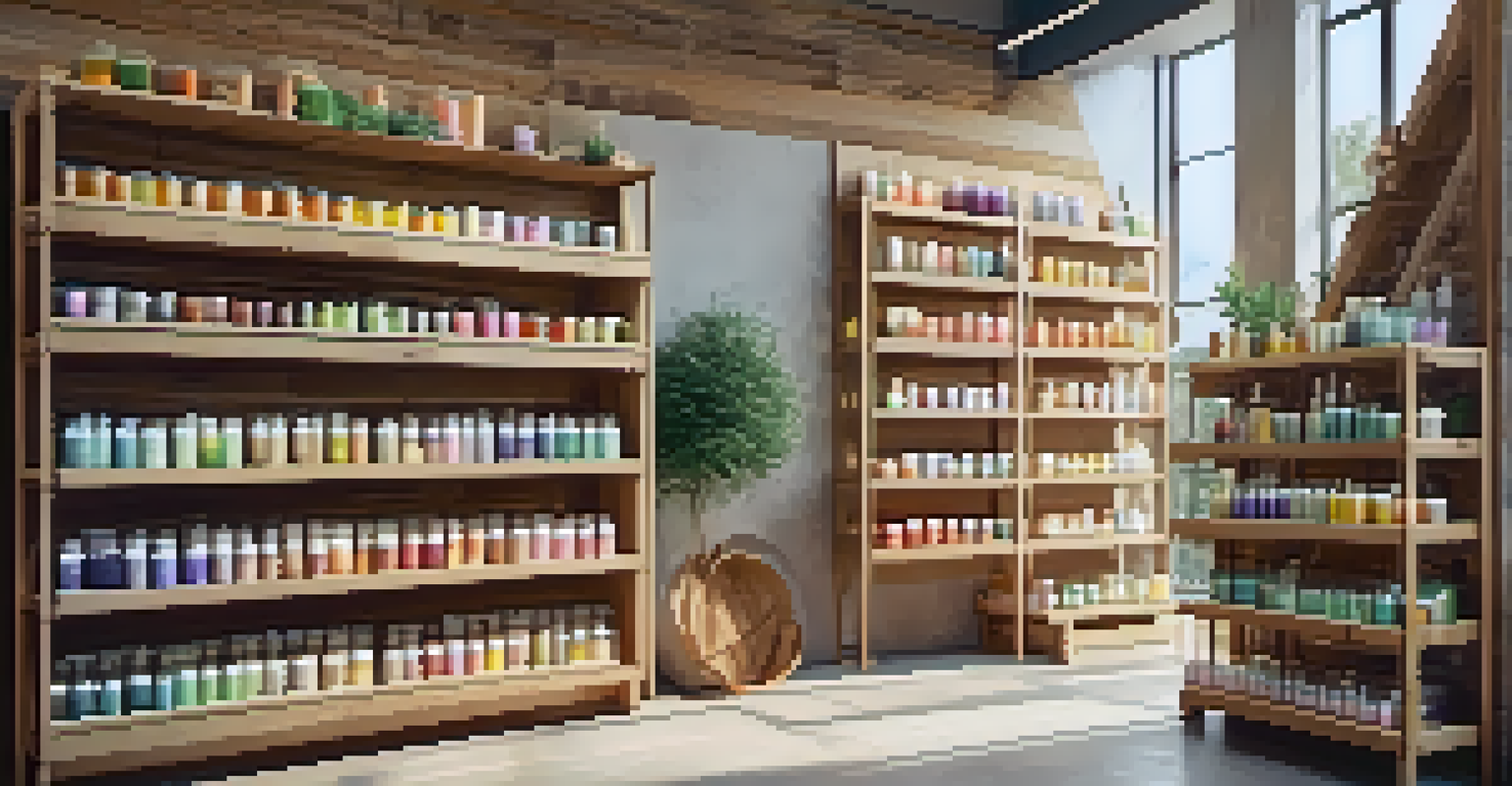The History of Soap Making: From Ancient Times to Today

The Ancient Origins of Soap Making
Soap making dates back to ancient civilizations, with evidence found in Babylon around 2800 BC. Early recipes involved mixing animal fats with ashes and water, creating a rudimentary form of soap. This basic mixture was not only used for cleaning but also had medicinal properties, showcasing its importance in daily life.
Soap is to the body what laughter is to the soul.
In ancient Egypt, soap was made using a combination of oils and alkaline salts, which was seen as a luxury. The Egyptians valued cleanliness and often used scented oils for bathing, indicating that the concept of personal hygiene was well understood long before modern products emerged. This blend of functionality and luxury set the stage for the evolution of soap making.
As trade routes expanded, the knowledge of soap making spread to Greece and Rome. The Romans, in particular, perfected the process and even established public baths that were integral to their culture. This expansion laid the groundwork for soap's significance throughout history, influencing hygiene practices for generations.
Soap in the Middle Ages: A Shift in Production
During the Middle Ages, soap making became more localized, with skilled artisans in towns creating it from animal fats and plant ashes. This period saw a decline in the use of soap due to the rise of superstition and the belief that bathing was unhealthy. Nonetheless, the craft continued, often in secret, preserving ancient techniques.

The Crusades played a pivotal role in reviving soap making in Europe, as returning soldiers brought back new ingredients and knowledge from the East. This exchange introduced the use of olive oil in soap production, particularly in Mediterranean regions, enhancing its quality and scent. The blend of cultures enriched the soap-making craft, making it more diverse.
Soap's Ancient Origins
Soap making dates back to ancient civilizations, with early recipes highlighting its dual role in cleanliness and medicinal use.
By the late Middle Ages, soap was increasingly recognized for its cleansing abilities, leading to a resurgence in its popularity. The establishment of guilds for soap makers in cities marked the beginning of a more structured industry, paving the way for commercial production and the eventual rise of soap as a household staple.
The Renaissance: Innovation and Quality
The Renaissance brought about significant advancements in soap making, with a focus on quality and aesthetics. This period saw soap makers experimenting with fragrances, colors, and exotic ingredients, which made their products more appealing to the upper classes. The craft became synonymous with luxury, as artisans took pride in their creations.
The greatest wealth is health.
In France, the city of Marseille emerged as a soap-making hub, known for its high-quality olive oil soap. This 'Savon de Marseille' became a benchmark for soap quality, and its reputation spread across Europe. The meticulous methods of production and the use of natural ingredients set a standard that many aspired to achieve.
The increasing demand for soap during this time led to the establishment of factories, marking a shift from small-scale artisanal production to more industrial methods. While this change allowed for greater accessibility, it also raised questions about the purity and authenticity of soap, which would continue to be debated in the years to come.
The Industrial Revolution: Mass Production
The Industrial Revolution transformed soap making from a small-scale craft to a booming industry. With the introduction of new technologies, soap could be produced in larger quantities and at a lower cost, making it accessible to the masses. This shift not only changed the production methods but also the marketing strategies used by soap manufacturers.
Innovations such as the steam engine allowed soap makers to increase production efficiency, while clever advertising began to play a crucial role in shaping consumer preferences. Companies like Procter & Gamble emerged during this time, introducing branded soaps that appealed to a growing middle class. This era marked a turning point in how soap was perceived—from a necessity to a marketed commodity.
Rise of Artisanal Soap
The 20th century revival of traditional soap making emphasized natural ingredients and sustainable practices in response to synthetic alternatives.
As a result, soap became an essential part of everyday life, and its role in personal hygiene was widely recognized. The shift to mass production also paved the way for the development of various types of soap, catering to diverse consumer needs and preferences, from scented bars to medicated varieties.
The 20th Century: Natural vs. Synthetic
The 20th century saw a significant evolution in soap making, particularly with the rise of synthetic ingredients. As chemists began to develop synthetic surfactants, traditional soap faced competition from these new, often more effective products. This change sparked debates about the benefits and drawbacks of natural versus synthetic soaps.
In response to the emergence of synthetic products, many consumers began to seek out traditional, natural soaps, leading to a resurgence in artisanal soap making. Small businesses emerged, focusing on handcrafted, organic ingredients that appealed to health-conscious consumers. This shift not only celebrated the craft of soap making but also emphasized the importance of natural ingredients in personal care products.
The late 20th century also marked a growing awareness of environmental issues, prompting soap makers to adopt sustainable practices. This focus on eco-friendly production methods and biodegradable ingredients resonated with consumers, leading to a new wave of soap that combined tradition with modern values.
Modern Soap Making: Trends and Innovations
Today, soap making has evolved into a creative and innovative industry, with countless varieties available on the market. From artisanal bars infused with essential oils to luxurious liquid soaps, the choices are seemingly endless. This diversity reflects a broader trend toward personalization in consumer products, allowing individuals to select soaps that cater to their unique preferences.
The rise of social media has also played a significant role in the soap industry, enabling small businesses to reach global audiences. Platforms like Instagram showcase beautiful, handcrafted soaps, inspiring a new generation of soap makers. This visibility has led to a revival of traditional techniques, encouraging artisans to experiment with unique ingredients and designs.
Future Focus on Sustainability
The soap industry is shifting towards eco-conscious practices, prioritizing biodegradable ingredients and innovative packaging solutions.
Moreover, the current focus on wellness and self-care has positioned soap as not just a cleaning product, but as a part of a holistic lifestyle. Consumers are increasingly drawn to soaps that offer therapeutic benefits, such as calming scents or skin-nourishing properties, highlighting the enduring connection between soap and personal well-being.
The Future of Soap Making: Sustainability and Beyond
Looking ahead, the future of soap making is likely to be shaped by sustainability and eco-consciousness. As consumers become more aware of their environmental impact, there is a growing demand for biodegradable and ethically sourced ingredients. Soap makers are responding by prioritizing sustainable practices and exploring new formulations that minimize their ecological footprint.
Innovations in packaging are also on the rise, with many brands opting for zero-waste solutions and refillable containers. This shift not only addresses environmental concerns but also aligns with the values of a consumer base that increasingly prioritizes sustainability. The soap industry is adapting to these changes, ensuring that it remains relevant in a rapidly evolving marketplace.

Ultimately, the journey of soap making—from ancient traditions to modern innovations—reflects humanity's ongoing commitment to cleanliness, wellness, and environmental stewardship. As we continue to embrace new technologies and practices, the future of soap making promises to be as rich and diverse as its storied past.